Severe El Niño Drought Wilts Summer Grain Crops in Southern Africa
A severe El Niño drought caused irreversible crop damage in southern Africa, especially for the countries of South Africa, Swaziland, Lesotho, Botswana, Nambia, southern Mozambique and southern Zimbabwe (Figure 1). High temperatures and prolonged dryness occurred during January through March, which is when crops in the region reach critical pollination and grain-filling stages. The severe drought is one of the worst droughts to hit South Africa's main corn belt since 1992. In addition, South Africa this year will have to import over one million tons of yellow maize when South Africa is typically considered an export granary for the region.
The El Niño induced drought also drastically reduced grain production for countries that border South Africa’s corn belt, such as Lesotho and Swaziland. For example, crop production in both these countries is currently estimated by USDA to be 40 percent less than last year and Swaziland is facing the sixth consecutive year of poor harvests. In addition, a crop assessment team from the Food and Agriculture Organization (FAO) and World Food Program (WFP) is currently surveying the expected crop harvest in Swaziland, and they are expected in May to release data for determining the extent of emergency food relief requirements for the country.
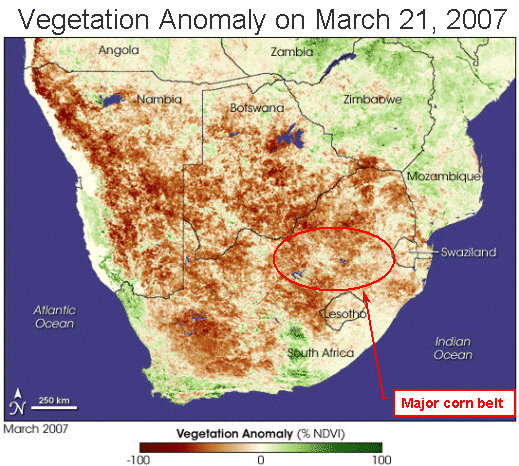
Figure 1. Vegetation anomaly image is from MODIS sensor received on March 22, 2007. Dark colors show that the spatial extent of drought covers several countries in Southern Africa. (Image from NASA and USDA’s GLAM (Global Agricultural Monitoring) project.)
South Africa Crop Conditions
For South Africa, corn production is forecast at 6 million tons, well below the annual national demand of 8 million tons and 40 percent lower than USDA’s 10 million ton estimate at the beginning of January, 2007. Crop conditions were above average at the end of December but the El Niño induced drought from early-January through March caused irreversible damage to the crops and lowered potential yields and grain quality. Crop conditions in the eastern corn belt of South Africa were better than in the west, but yields in the east also will be well below average. The estimated yield of 2.14 tons/hectare is well below the 5-year average yield of 3.10 tons/hectares (Figure 2), and any rainfall received during April was expected to be too late to bring relief to the damaged crops. Also, USDA’s corn area estimate was reduced by 100,000 hectares in April 10th's estimate due to late-planted crops in the west (i.e., nearly 40 percent of total crop) wilting in the fields from late-February through March.
Seasonal rainfall accumulations during 2007 were very similar to the severe drought of 1992 for all major regions within the Maize Triangle (i.e., east, central and west regions). Correspondingly, the current yield estimate is 31 percent lower than the 5-year average, while yield reductions during severe drought years of 1994/95 and 1991/92 were down 33 and 62 percent from the 5-year moving average, respectively (see Figure 3). Irrigation also will not save South Africa from reduced yields this season because 2006/07 irrigated corn area of 170,000 hectares is less than the 5-year average Historically, South Africa experiences reduced yields during strong El Niño years, as indicated in Figure 2.
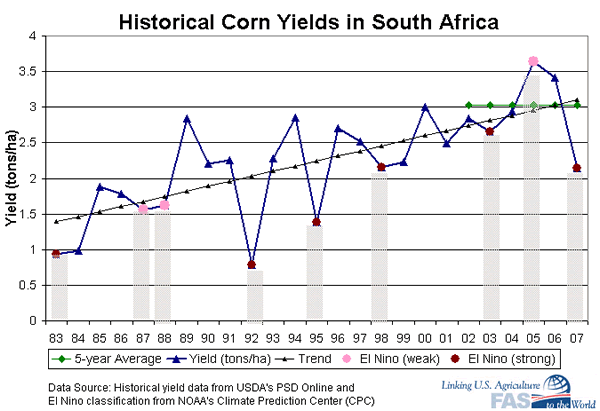
Figure 2. Strong El Niño years greatly reduced summer corn yields in South Africa.
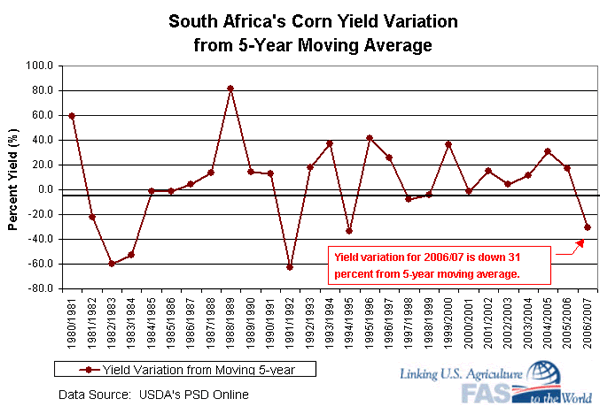
Figure 3. South Africa's Corn Yield Variation from 5-year Average.
South African farmers are very good at soil moisture conservation and some corn fields produced decent yields this year from proper weed control and seed bed preparation; good soil moisture storage from fields left fallow during previous summer and winter seasons; early planted fields from first rains of the summer season; and breaking compacted soils for deep root penetration. Figure 4 shows a corn field located near Bothaville with good yields because the farmer followed most of the above soil moisture conservation practices. However, Figure 5 shows another representative field located near Bothaville in poor condition because it was planted 1-2 months late and experienced prolonged dryness during January through February.
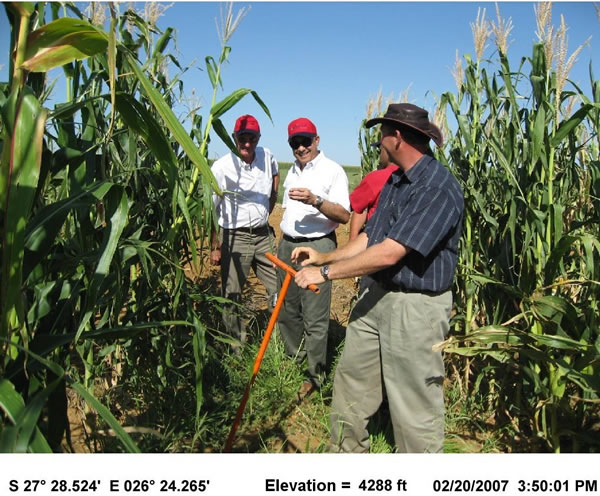
Figure 4. Corn field near Bothaville with decent yields because it was planted early, was left fallow during previous season, and compacted topsoils were broken 1-meter deep for deep root penetration.
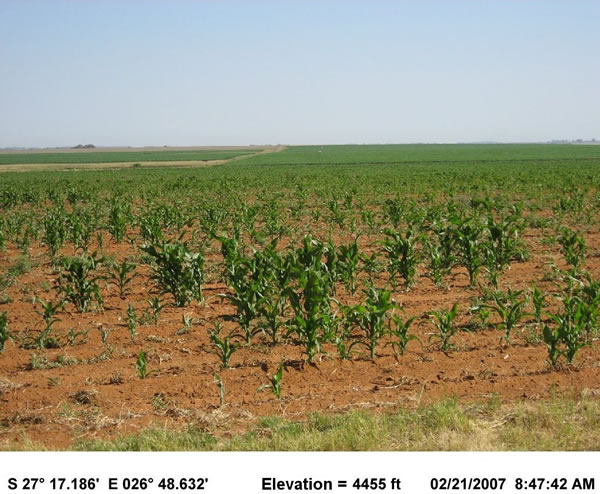
Figure 5. Many corn fields located near Bothaville failed in March due to late planting date and prolonged dryness and high temperatures.
Ethanol Distilleries in South Africa
Ethanol Africa has started construction of South Africa’s first corn ethanol distillery at Bothaville, the center of South Africa’s corn belt (see Figure 6). The Bothaville distillery plant (Figure 7) will be the first of eight similar plants to be built in South Africa, with one proposed plant at Sasolburg to utilize grain sorghum instead of corn. The other six corn distilleries will be located at Middelburg, Lichtenburg, Bultfontein, Ventersdorp, Frankfort, and Bloemhof (see Figure 6).
Each corn distillery will produce approximately 470,000 liters of ethanol per day and 320 tons of Distillers Grain and Solubles (DDGS), which is a by product used to supplement diets for livestock. The Bothaville plant will consume 1150 tons of corn per day, or approximately 400,000 tons of corn per year grown on approximately 150,000 hectares within a 80-100 kilometer radius of each plant. Construction of the Bothaville plant is expected to be completed by the second quarter of 2008, and a large portion of South Africa’s emerging farmers on resettled farms will be given contracts to grow and supply yellow corn for the proposed distillery plants.
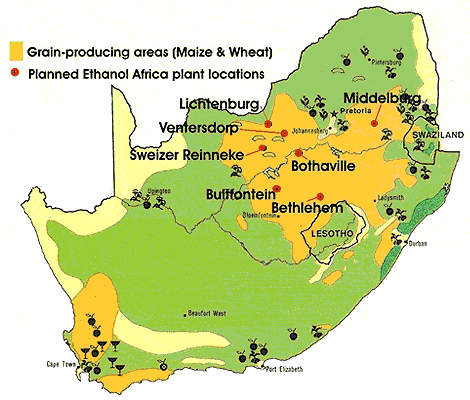
Figure 6. Map (from Ethanol Africa) Showing Ethanol Plant Locations

Figure 7. Construction has started for the offices at the proposed Bothaville ethanol plant.
Current USDA area and production estimates for grains and other agricultural commodities are available at PSD Online.
Other Related Links and Images
South Africa's 2006/07 Corn Crop Wilts from Prolonged Dryness (Apr 10, 2007)
Drought in South Africa Reduces Corn Yields (Mar 12, 2007)
Lack of January Rainfall Raises Concerns in South Africa's Corn Belt (Feb 12, 2007)
South Africa: Corn Area and Production Expected to Increase (Dec 12, 2006 )
Drought in Southern Africa (NASA’s Earth Observatory)
Food Security Situation in Southern Africa (Mar 14, 2007)
La Nina Delivers Wet and Cold Weather to South Africa's Corn (May 2, 2006)
South Africa: 2005 Crop Tour Summary (April 12, 2005)
Bumper Harvest Expected for South Africa (April 12, 2005)
Crop Explorer for Southern Africa
MODIS (250-meter)/NDVI Time-Series Charts
Ethanol Africa
|

